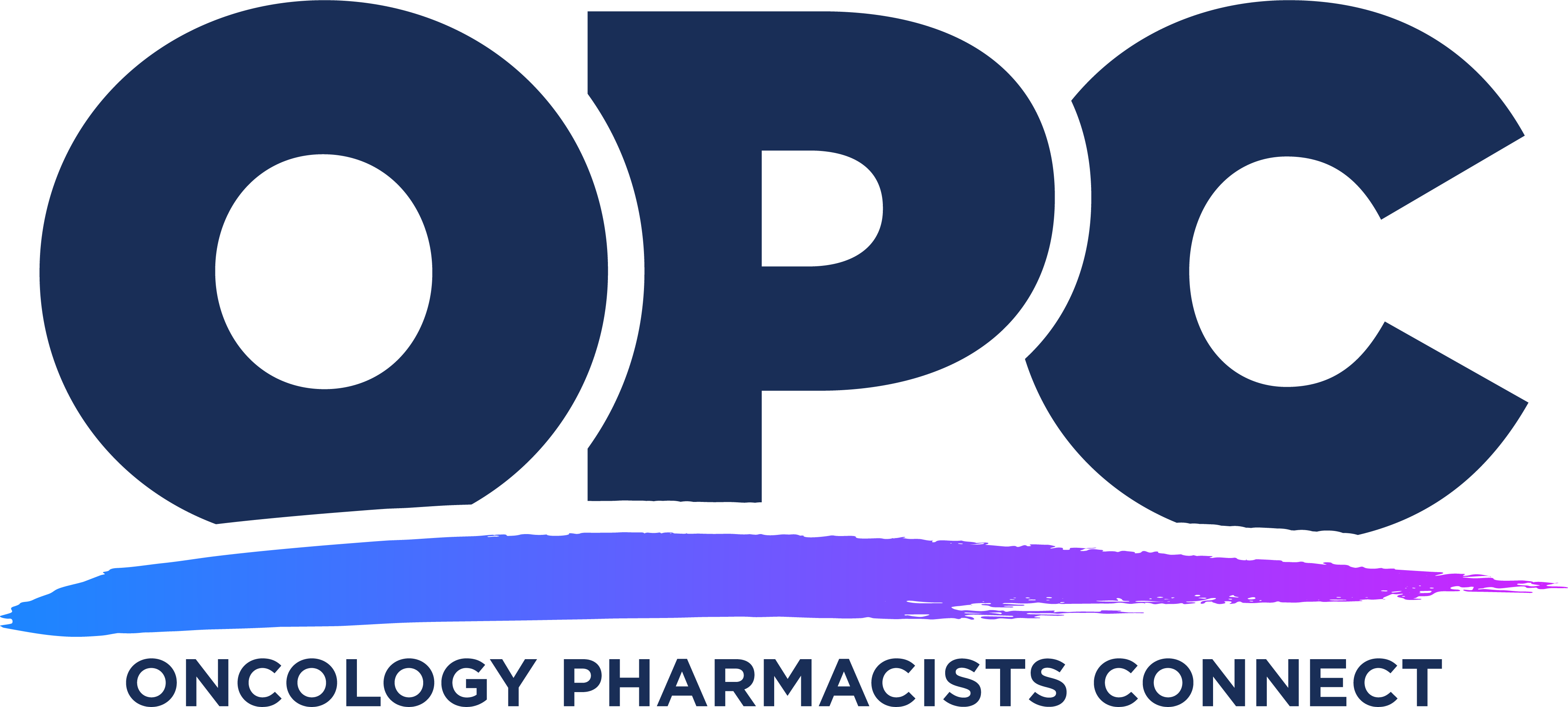
OPC 2025: Early and Metastatic GI Cancers See Practice-Changing Trial Results

Key Takeaways
- The ATOMIC trial showed improved 3-year disease-free survival with atezolizumab addition in stage III dMMR colon cancer, though safety concerns like increased grade 4 neutropenia were noted.
- MATTERHORN trial results suggest durvalumab addition to FLOT chemotherapy improves outcomes in resectable gastric cancers, although PD-L1 expression assessment methods warrant cautious interpretation.
At the 2025 Oncology Pharmacists Connect (OPC) meeting, Courtney Cavalieri, PharmD, BCOP, presented clinical trial findings in gastrointestinal (GI) cancers—including colon, gastric, pancreatic, and metastatic colorectal cancer—that highlight the expanding role of immunotherapy and targeted treatments.
Advances in gastrointestinal (GI) oncology are rapidly reshaping therapeutic strategies, particularly as immunotherapy and targeted treatments move into earlier lines of care. At the 2025 Oncology Pharmacists Connect (OPC) meeting in Austin, Texas, Courtney Cavalieri, PharmD, BCOP, a clinical oncology pharmacist and PGY-2 oncology pharmacy residency program coordinator at Huntsman Cancer Institute at the University of Utah in Salt Lake City, delivered a presentation summarizing recent clinical trial data shaping the treatment landscape for GI cancers. Cavalieri highlighted key findings from pivotal studies in early-stage and metastatic colon, gastric, and pancreatic cancers, emphasizing how these developments are poised to influence clinical pharmacy practice.1
The ATOMIC Trial
The phase 3 ATOMIC trial (NCT02912559) evaluated the addition of atezolizumab (Tecentriq; Genentech) to adjuvant chemotherapy in patients with stage III deficient mismatch repair (dMMR) colon cancer. Traditionally, these patients—comprising about 15% of the colon cancer population—receive adjuvant 5-fluorouracil, leucovorin, and oxaliplatin (FOLFOX) for 6 months post-surgery. The ATOMIC trial explored whether adding the immune checkpoint inhibitor atezolizumab to this regimen would improve outcomes.2
During the trial, patients were randomly assigned to receive standard FOLFOX alone or FOLFOX plus atezolizumab for 6 months, followed by an additional 6 months of atezolizumab monotherapy, totaling 1 year of treatment. After a median follow-up of 37 months, patients in the atezolizumab arm experienced a significantly higher 3-year disease-free survival rate compared with the control arm at 86.4% vs 76.6%, respectively. This benefit extended across various subgroups, including patients older than 70 years and those with both low- and high-risk disease features.2
While overall survival (OS) data from ATOMIC were still immature at the time of analysis, Cavalieri noted that interpreting these results could prove challenging due to the likelihood of crossover to immunotherapy upon disease progression. Regarding safety, the adverse event (AE) profile was generally consistent with expectations, although a notable increase in grade 4 neutropenia—14% in the atezolizumab arm—warrants consideration, according to Cavalieri. Although the incidence of neutropenia was not associated with higher rates of febrile neutropenia, it may influence future decisions around granulocyte colony-stimulating factor use, particularly for secondary prophylaxis. Additionally, Cavalieri noted that immune-related AEs observed in the trial aligned with the established safety profile of atezolizumab.2
The ATOMIC trial began prior to the publication of the International Duration Evaluation of Adjuvant Chemotherapy (IDEA) consortium data in 2018, which established the acceptability of a shortened 3-month capecitabine and oxaliplatin (CAPOX) regimen for select stage III patients. Cavalieri acknowledged this could prompt questions about whether atezolizumab could be safely paired with CAPOX instead of FOLFOX, although data are currently lacking for that combination.2
The MATTERHORN Trial
Cavalieri then shifted to upper GI cancers, focusing on the MATTERHORN trial (NCT04592913), which evaluated the addition of durvalumab (Imfinzi; AstraZeneca) to perioperative fluorouracil, leucovorin, oxaliplatin, and docetaxel (FLOT) chemotherapy in resectable gastric and gastroesophageal junction adenocarcinoma. In this study, patients received 4 cycles of FLOT plus 2 cycles of durvalumab before surgery, followed by another 4 cycles of FLOT and 2 more cycles of durvalumab postoperatively. Durvalumab monotherapy was then continued for 10 additional cycles.3
The results were promising, with both event-free survival and OS not reached at the time of data cutoff, and with significant improvement in pathologic complete response rates. These benefits appeared consistent across most subgroups.3
Cavalieri noted that a key methodological issue is the use of tumor area positivity (TAP) to assess PD-L1 expression, rather than the more common combined positive score or tumor proportion score. Approximately 90% of patients were considered PD-L1 positive using TAP, which Cavalieri explained is unusually high for gastric adenocarcinoma and highlights the need for caution when interpreting these subgroup data. Importantly, the benefit of durvalumab appeared less pronounced in PD-L1–negative patients, though this information was buried in the supplemental data.3
Despite the lack of FDA approval or formal inclusion in guidelines, the MATTERHORN data have already influenced clinical practice at some centers. Cavalieri shared that physicians at her institution began requesting durvalumab for patients almost immediately after returning from the 2025 American Society of Clinical Oncology (ASCO) Annual Meeting, a testament to the perceived clinical relevance of these findings.3
“These results were so promising that our physicians got back from ASCO on June 2, and on June 3, we had a list of 8 patients they wanted to add durvalumab to their FLOT. We're in the process of figuring that out, because this isn't FDA approved yet, and this is not in the guidelines yet—they just haven't caught up,” Cavalieri said during the session at OPC. “But [the study investigators] managed to publish the article the same day that they presented the data at ASCO, so we had a little bit more information as well outside of the abstract.”1
The BREAKWATER Trial
Cavalieri then discussed the metastatic setting, beginning with the BREAKWATER trial (NCT04607421), which evaluated first-line therapy for patients with BRAF V600E–mutated metastatic colorectal cancer (mCRC). This subtype, though comprising only 8% to 12% of mCRC cases, is associated with aggressive disease and poor prognosis. The trial compared standard chemotherapy with a combination of FOLFOX, encorafenib (Braftovi; Pfizer), and cetuximab (Erbitux; Eli Lilly). A third arm using encorafenib and cetuximab alone was also included but closed early due to evolving standards.4
During the trial, patients receiving the triplet regimen had a median progression-free survival (PFS) of 12.8 months compared with 7.0 months in the chemotherapy-alone group. Median OS nearly doubled with the combination regimen, and benefits were seen across subgroups, including both right- and left-sided tumors and in patients with liver metastases. The objective response rate included nearly 5% complete responses.4
Additionally, toxicity data were consistent with expectations, Cavalieri explained. Common AEs included rash, pyrexia, and arthralgia, with cetuximab-associated skin toxicity remaining a notable issue. Notably, the targeted therapy–only arm had numerically fewer grade 3 AEs, raising the possibility of a less toxic option for patients unable to tolerate chemotherapy.4
The PANOVA-3 Trial
Cavalieri also highlighted a trial that demonstrates a novel approach in pancreatic cancer, a disease that rarely sees therapeutic innovation. The phase 3 PANOVA-3 (NCT03377491) trial assessed the use of tumor-treating fields (TTFields) in patients with locally advanced, unresectable pancreatic cancer. This subgroup of patients has historically been treated with systemic chemotherapy extrapolated from metastatic disease protocols due to a lack of dedicated trials. The use of TTFields takes a different approach, as it delivers low-intensity electric fields through adhesive arrays worn on the abdomen for at least 18 hours per day, disrupting cancer cell division.5
In the PANOVA-3 trial, patients received gemcitabine and nab-paclitaxel (Abraxane; Bristol Myers Squibb) with or without TTFields. Although the trial showed only a modest improvement in OS and no significant gains in PFS or objective response, it did show a notable improvement in pain-free survival, which is a critical outcome for this symptom-heavy population, according to Cavalieri. Notably, TTFields did not increase systemic toxicity, although dermatologic issues such as erythema and dermatitis were common due to prolonged device wear.5
The ASAC Trial
The final study discussed served as an important reminder of the value of negative trials. The ASAC (NCT03326791) trial, a Scandinavian, multicenter, randomized, double‑blind, placebo‑controlled phase 3 study, evaluated aspirin as adjuvant therapy in patients with oligometastatic colorectal cancer who had undergone liver metastasectomy. Aspirin has long been hypothesized to have anticancer effects, but in this trial, it failed to show benefit and may have been detrimental. The placebo group performed better numerically, and the aspirin group experienced a higher rate of severe and life-threatening AEs. Cavalieri emphasized that although aspirin continues to be explored in primary and secondary prevention of colorectal cancer, its role in the metastatic setting appears unsupported by current evidence.6
“Aspirin isn't new, but they have been trying over and over and over again to show that it decreases either colon cancer in the primary prevention setting or recurrence of colon cancer in the secondary setting,” Cavalieri said. “Aspirin has been floating around for years and years, and it's nice to see negative trials published, because then we know what not to do, but we do need to confirm this in a larger trial.”1
REFERENCE
Cavalieri CC. Beyond Gut Feelings: New Evidence in Gastrointestinal Malignancies. Presented at: Oncology Pharmacists Connect; Austin, Texas; June 19-20, 2025.
Sinicrope FA, Ou FS, Arnold D, et al. Randomized trial of standard chemotherapy alone or combined with atezolizumab as adjuvant therapy for patients with stage III deficient DNA mismatch repair (dMMR) colon cancer (Alliance A021502; ATOMIC). J Clin Oncol. 2025;43(17 suppl). doi:10.1200/JCO.2025.43.17_suppl.LBA1
Imfinzi-based regimen demonstrated statistically significant and clinically meaningful improvement in event-free survival in resectable early-stage gastric and gastroesophageal junction cancers. News release. AstraZeneca. March 7, 2025. Accessed June 20, 2025. https://www.astrazeneca.com/media-centre/press-releases/2025/imfinzi-improved-efs-in-early-stage-gastric-cancer.html
Kopetz S, Yoshino T, Van Cutsem E, et al. Encorafenib, cetuximab and chemotherapy in BRAF-mutant colorectal cancer: a randomized phase 3 trial. Nature. 2025;31:901-908. doi:10.1038/s41591-024-03443-3
Babiker HM, Macarulla T, Philip PA, et al. Phase 3 PANOVA-3 study: tumor treating fields (TTFields) therapy concomitant with gemcitabine and nab-paclitaxel (GnP) for front-line treatment of locally advanced pancreatic cancer. J Clin Oncol. 2023;41(16 suppl). doi:10.1200/JCO.2023.41.16_suppl.TPS4199
Yaqub S, Bjornbeth BA, Angelsen JH, et al. Aspirin as secondary prevention for colorectal cancer liver metastases (ASAC): a multicenter, randomized, double-blind, placebo-controlled, phase 3 trial. J Clin Oncol. 2025;43(17 suppl). doi:10.1200/JCO.2025.43.17_suppl.LBA3511
Newsletter
Stay informed on drug updates, treatment guidelines, and pharmacy practice trends—subscribe to Pharmacy Times for weekly clinical insights.






































































































































































































